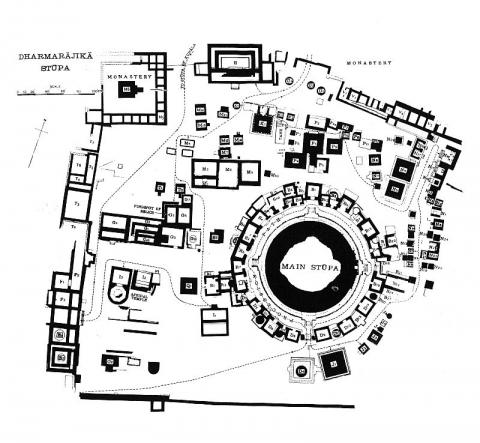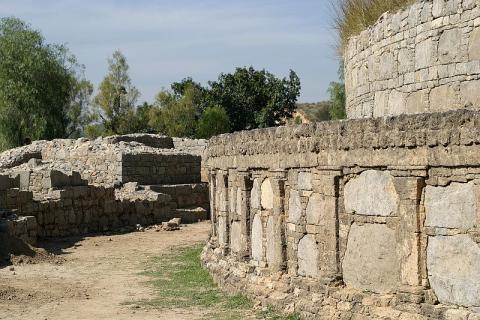Mentioned in the ancient Indian and classical sources as a renowned university centre, Taxila (Punjab, Pakistan) is one of the most astonishing urban centres ever excavated on the Indian Subcontinent. Much of its prosperity rested on its location at the crossroads of three great trade routes: from India in the south-east, from Western Central Asia through Bactria, and from Eastern Central Asia through Swat and/or Kashmir. This strategic location also made Taxila a desirable possession for great powers. Once part of the Achaemenid Empire, Taxila was conquered by Alexander the Great in 326 BCE. After a short interlude under the Seleucids, in c. 316 BCE Taxila was incorporated into the Mauryan Empire. In the 2nd century BCE Taxila again came under the power of the Indo-Greeks, followed by Indo-Scythians. In the mid-1st century CE Taxila became part of the Kushan Empire, until it was conquered by the Kidarites at the end of the 4th century CE.
These historical events left profound marks on the city's physical shape and culture. Excavations carried out from 1912 to 1934 by the British archaeologist Sir John Marshall brought to light three different urban settlements: the oldest Bhir Mound which reached back to the Achaemenian and Indo-Greek period, Sirkap which had Indo-Greek beginnings but was active through the Saka-Parthian/Indo-Scythian period, and Sirsukh (Fig A), the poorly investigated foundation dated to the Kushan and post-Kushan period.
The extraordinary number and quality of the finds bear witness to the opulent and cultivated cosmopolitan culture of Taxila’s society. The city hosted a large number of religious buildings. Besides temples of still unclear nature, Buddhist stūpas and monasteries are interspersed throughout. Among these, one of the most famous is the Dharmarajika stūpa, which was founded by the great Mauryan emperor Aśoka (c. 274 – 236 BCE) in his younger days, when he was governor of Taxila under his father Bindusara (Fig. B.1–3).
Marshall’s firm conviction that the civil and religious settlements of Taxila suffered irrecoverable devastation during the Huna’s invasion in the mid-5th century CE is increasingly being challenged by new studies. Based on improved chronologies and interpretations of the archaeological data, the opposite might be true and the ultimate decline of the city placed in the mid-6th century.




